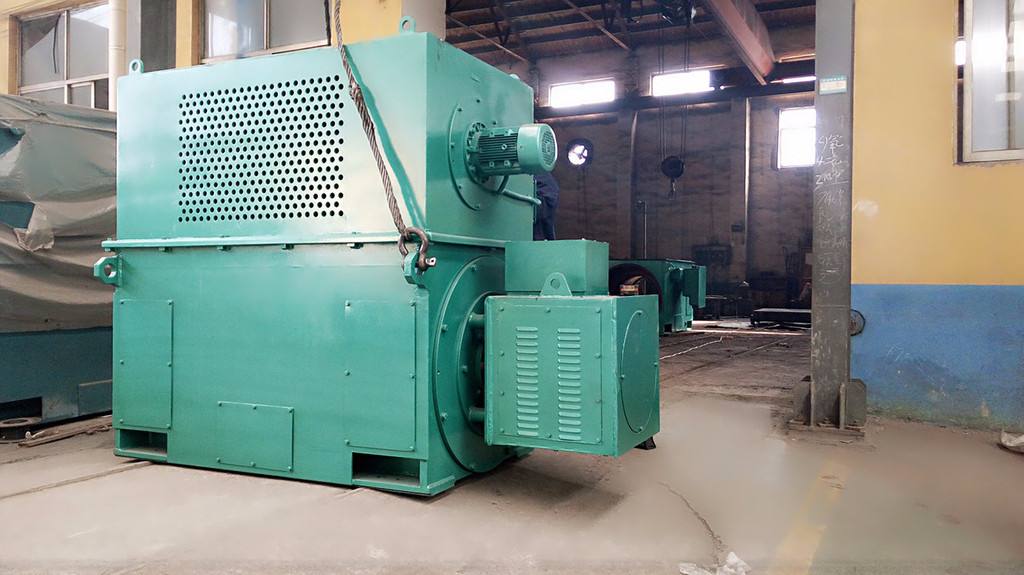(1) Large and medium-sized motors need to be customized
Different from the standardized design and production process of micro-motors, low-power motors and small-sized motors, large and medium-sized motors need to meet customer requirements for rated power, speed, voltage, bearing form, cooling method, protection level, torque characteristics, overload capacity, Dozens of parameters such as load characteristics, power grid conditions (power supply characteristics), use environment, center height, etc. are designed and manufactured. At the same time, on this basis, experienced technical R&D personnel are required to customize the motor according to the location and industry characteristics of the motor, considering a series of factors such as reliability and safety.
(2) The structure and manufacturing process of large and medium-sized motors are complex
The structure of large and medium-sized motors is related to their categories, uses, rotational speeds, protection types, ventilation and cooling methods, and installation types. Generally, they are composed of multiple complex structural components with various geometric shapes.
The complex structure of large and medium-sized motors determines its complex manufacturing process and numerous processes. Large and medium-sized motors generally need to go through metal processing processes such as blanking, welding, heat treatment, and spraying; metal processing processes such as turning, pliers, planing, milling, boring, grinding, drilling, and inserting; , press-fitting and other stamping processing process links; electrical processing process links such as winding, drawing, wrapping, wire embedding, joints; vacuum pressure impregnation (VPI), winding anti-corona, coating and other insulation and chemical process links; Balance, assembly, testing and other testing links, each link needs to be equipped with special processing equipment and experienced senior technicians.

(3) The inspection requirements for large and medium-sized motors are high
Before leaving the factory, large and medium-sized motors often need to go through complex inspection procedures to ensure product safety and reliability. The unit price of large and medium-sized motors is relatively high, and end customers rarely purchase spare motors, but the safety and reliability of the motors directly affect the safety and reliability of the entire production system. Therefore, end customers have extremely high requirements for the comprehensive quality of large and medium-sized motors. The production process and a series of inspection procedures before leaving the factory can ensure the quality and performance of the motor to the greatest extent, so the manufacturers of large and medium-sized motors have very strict inspection requirements for their production process, generally including raw material inspection (including chemical composition, mechanical performance inspection) , flaw detection inspection, insulation and dielectric strength testing, etc.), parts structure size and shape and position tolerance inspection, semi-finished product inspection, finished product factory test or type test and many other tests.
(4) Customers have high requirements for reliability and after-sales service of large and medium-sized motor products
In general, the design life of large and medium-sized motors is 20 years, and the design life of large and medium-sized generators is 30 years. Large and medium-sized motors generally need to be overhauled once every 1 to 2 years. In some special cases, some motors have an overhaul period of more than 4 years, or even 10 years. Large and medium-sized motors often need to maintain stable and uninterrupted operation during the operation cycle, and can not be shut down for relevant inspection and maintenance until the end of the maintenance cycle.
Prolonged operation can cause wear, corrosion and deformation of components. Due to the high value of large and medium-sized motors, users often do not reserve spare motors to replace faulty motors. Therefore, when the motor fails, it will inevitably cause the end customer’s system to reduce production or shut down. Therefore, the product quality and after-sales service capabilities of large and medium-sized motor manufacturers, and the ability to quickly repair in case of occasional failures, have become one of the main reasons for customers to choose products. Customers have put forward high requirements for the reliability and after-sales service level of large and medium-sized motor products.
Post time: 2022-02-14











